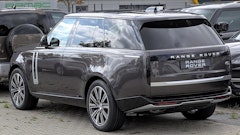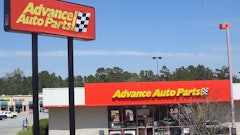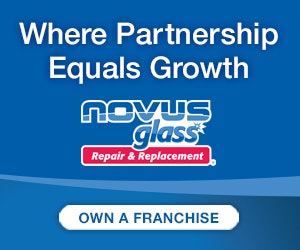
GO VENTLESS
Ask any collision centre owner: nothing in the industry is free. Even air can cost you. Through conventional spray booths—which tend to feature enclosed designs and large fans requiring air make-up units—air from inside the booth is filtered from outside and through the booth, where it’s then passed through filters and back to the outdoors. Comparatively, Toronto-based company Ventless Inc. offers spray booths that feature four stages of filtration: a standard main filter designed to stop particulate, but also hold an additional set of activated carbon filters that act as a “holding ground” for volatile organic compounds (VOCs) and fumes, Jean Naim, president of Ventless, told Collision Repair. “Your fumes and odours are trapped in the carbon. Anything associated with VOC presence is captured in these filters,” said Naim. “Then clean air flows past the filters and back into the booth through the downdraft. Up to 90 percent of the air stays in the booth after the contaminants have been filtered.” Naim also says the system makes maintenance much easier. “Only the filters need replacing. The VOC filters are permanent, but the carbon needs to be changed when saturated, each change will cost approximately $100 for the entire booth. Plus, because our booths emit five-to-ten percent emissions compared to 100 percent emissions in standard spray booths, collision centre owners are more likely to be permitted with Ministry of Environment standards, especially if you’re in proximity to residential areas,” added Naim. “It’s a huge benefit for owners, compared to the conventional rival.”
ADAS AWARE
Recent research from the Insurance Institute for Highway Safety indicates that proper knowledge of internal safety systems tends to slip when a vehicle meets its second owner. “Used car buyers were substantially less likely than new car buyers to know about the advanced driver assistance features present on their vehicles,” said IIHS senior research scientist and author of the study Ian Reagan. “They were also less likely to be able to describe how those features work, and they had less trust in them. That could translate into less frequent use, causing crash reductions from these systems to wane.” The report found that 84 percent of new car buyers knew their vehicle was equipped with a blind-spot warning, compared with only 72 percent of used car buyers. Similarly, 77 percent of new car buyers could accurately describe what lane departure warning does, compared with 66 percent of used car buyers.
The results also found new vehicle buyers place a higher level of trust in their vehicle’s safety systems than used buyers, which the IIHS attributes to the fact that 95 percent of new car buyers bought their vehicle from a dealership specializing in the brand they purchased, compared with 74 percent of used car buyers.

RIGHT FIT
Bentley Motors is exploring the use of 3D printed vehicle components, down to powertrains, the luxury automaker said in February. The announcement came alongside investment in the automaker’s additive manufacturing (AM) capacity at its Crewe, England, factory, where all its models are assembled. The AM unit has been tasked to create physical components for several prototype Bentleys, down to full-scale powertrain and aerodynamic wind tunnel models.

HONDA SENSING STANDARD
Honda has officially made safety the standard, announcing that Honda Sensing ADAS technology will now come built into all new vehicle models going forward. Honda Sensing, which debuted on the 2015 Honda CR-V, includes a collision mitigation braking system with a forward-collision warning; road departure mitigation with lane departure warning; lane-keeping assist system; and adaptive cruise control with low-speed follow. By having adaptive cruise control and lane-keeping that can operate continuously and simultaneously, Honda Sensing technically achieves Level 2 autonomous driving, as defined by SAE International. Some newer Honda models also include Traffic Jam Assist, Traffic Sign Recognition, and a driver attention monitor, Honda said in its announcement.
ARCTIC CHARGE
In a move that has the potential to bust some myths about EV efficacy in Canada’s north, the Yukon government announced in mid-February that nearly all of the territory’s highways have been linked up to the electric vehicle charging network. The territory has been rapidly expanding its EV charging network over the past year, and with this latest investment, supported in part by the federal government, seven more EV fast chargers have been earmarked for installation over the coming months. The introduction of fast chargers to the communities of Teslin, Whitehorse, Carmacks, Pelly Crossing, Mayo and Dawson City will bring the Yukon’s total number of charging locations to 19.




















